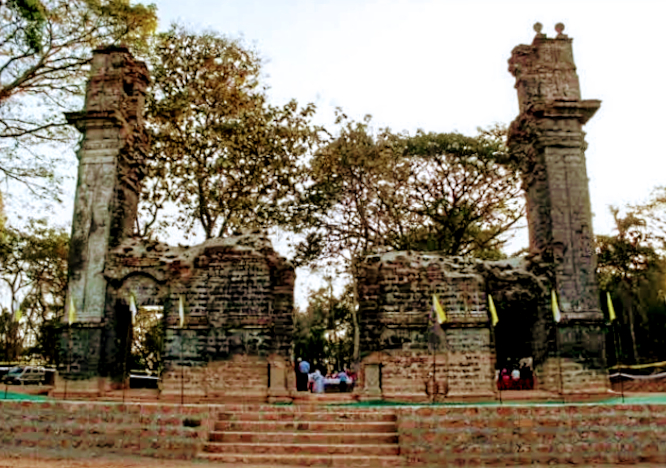
There have been several bishops from Goa over the last four centuries, but the honour of shaping the first Goan bishop goes to a Spanish Carmelite priest, who also founded India’s first Carmelite monastery in Old Goa.
August 4 marks the 441st birthday of this unsung and forgotten personality in Goa’s history, Fr Leander of the Annunciation.
Born as Luis de Melgosa at Burgos-Spain in 1580 and descending from a noble family, Fr Leander left his career as a captain and entered the Carmelite order in 1605 and was sent to the Persian mission in 1610.
He was commissioned to set up a religious house in Goa. On his travel he wrote the poem ‘Pasatiempo de un Religioso Carmelitano Descalzo en un largo y trabajoso viaje que hizo a la India’ in Castilian in the classical style.
The ‘xenophobic’ policies of the Portuguese did not allow the religious from non-Portuguese backgrounds to establish their houses in Goa. As these Carmelites were sent from Rome directly under the authority of the Pope and not from the Portuguese King, they were denied permission for a long time by authorities in Goa.
Fr Leandro was aware of the piety shown by Archbishop D Cristovao de Sa’ towards St Teresa of Avila, the Holy Mother of the Carmelites. A strong sense of Prudence and Piety prompted him to place the statue of St Teresa of Avila in the procession ordered by the Archbishop from the Cruz dos Milagros Church to the Se Cathedral.
When the archbishop blessed the statue, he found a note in the hands of the saint asking: “Please provide my sons a place in Goa”. The archbishop could no longer resist and with tears in his eyes issued the permission on the spot. Thus on April 25, 1620, he was successful in founding the first Carmelite convent of India at Old Goa.
The pigmentocracy of the Portuguese looked down upon Goans as unfit for priesthood. Matheus de Castro from Divar was denied priesthood for the same reason. However, he contacted Fr Leandro, who recommended him to the archbishop, but he refused it sternly.
By 1621, Fr Leandro, who was the superior of the Carmelite monastery in Old Goa, sent Castro along with a group of Carmelites to Persia.
Castro then proceeded to Rome along with some Carmelites in 1625 and they introduced Castro to Francesco Ingoli, the dynamic secretary of the Propaganda Fide.
Ingoli was impressed with Castro and he was accepted into seminary and ordained a priest of the Oratorians. He was consecrated as the Bishop of Chrysopolis, thus becoming the first Indian bishop of the Catholic Church of the Latin Rite.
When the Portuguese closed the doors, the Carmelites especially in the person of Fr Leander opened the door for this son of Goa a path to priesthood.
D Matheus de Castro was one of the first Goans who took efforts to liberate his own soil from the Portuguese colonisers by aligning with the Sultan Adilshah of Bijapur.
Fr Leander was able to found a religious house in Diu by 1628 amid the resistance of the archbishop. He also established a missionary seminary near today’s Carambolim in 1630, which is now extinct. He was also sent as an ambassador to the Bijapur court in 1630.
The monastery in Old Goa, though confiscated in the 1700s from the Carmelites and suppressed by the Portuguese in 1835, continued to inspire the spiritual foundations of the Chimbel Carmelites and the Carmelites of Margao.
He died at sea off Goa in 1630. His ability to overcome the hurdles through Prudence and Piety established the first monastery of the Carmelites in India and also contributed to the formation of the first Indian Bishop from Goa. Indeed, he is an unsung and forgotten personality in Goan history who made a way amid the darkness of xenophobia and pigmentocracy.
(The writer is a Goa-based researcher on the Carmelite religious congregation)